Deer Resistant Perennials: Stop Planting All-You-Can-Eat Garden Buffets
Are you tired of providing an All-You-Can-Eat Garden Buffet for the local deer population? We are. After gardening in our yard, we’ve noticed within minutes of going inside, the deer stroll by searching for the next delicacies that we added to the garden. They are there to munch, not admire your hard toiling in the garden.
Imagine this: last fall, you remember planting some pansies by the mailbox, some hostas underneath the maple tree, and tulips in the front garden. But when Spring emerges the pansies, hostas, and tulips can’t be found. Then you wonder if maybe you moved the hostas to another area of the yard or if you lost the pansies over the long, harsh winter. Then you realize your gardens are just one long continuous All-You-Can-Eat Garden Buffet for the deer!
We’ve lost too many carefully planted perennials and at Halloween time, large pumpkins have mysteriously disappeared. One of our neighbors, an avid gardener biweekly sprays her garden to deter deer from nibbling away at her garden plants. Since we are unable to maintain an organic spraying schedule of any kind, we will begin transitioning away from plants that are not deer-resistant. Although, we do realize that during the long winter period, hungry deer may eat whatever is available to them.
We’ve compiled our list below of deer resistant garden perennial plants that deer tend to avoid. A word of caution – while these perennials are found to be ‘deer resistant’ they are not guaranteed to be ‘deer proof.’ Again, when we have long, cold hard winters our landscaping tends to suffer more as the deer become less choosy. But give your gardens a fighting chance by picking your perennials wisely! The first 18 plants prefer sun while the remaining plants 6 plants prefer a shady to partial shade garden environment. Take a look. Maybe you already have a few of these in your garden?
Sun-loving perennials that are deer resistant follow:

The Geranium Rozanne is a prolific blue-flowered Geranium that spreads and loves the sun. Beautiful blue flowers that are striking.

The Dianthus Early Bird Frosty is a hardy, sun loving perennial growing up to 8 inches tall. Blooms are lovely and fragrant.
3. Coreopsis Verticillata Moonbeam

The Coreopsis Verticillata Moonbeam, a tickseed perennial, blooms from June until October. The Coreopsis can reach up to two feet and thrives in full sun.

The Monarda Didyma Pink Lace has dark red stems that reach up to 16 inches tall. The upright Monarda perennial attracts butterflies and hummingbirds. The leaves when touched release a minty pungent scent. Monarda prefers a sunny to partial shade area with blooms from July until August.

The Liatris Spicata Kobold, Blazing Star perennial blooms from July to August. The Liatris reaches up to 30 inches tall and is considered a dwarf plant. This Liatris should be planted closer to the front of the garden bed.

The Anemone Sylvestris has white, fragrant blooms in May with repeat blooms in the cool days of early fall. The Anemone reaches 18 inches tall and is a vigorous spreader. The perennial does well in a sunny to partial shade area.

The Asclepias Tuberosa, also named Butterfly weed, brings bright orange to a Summer garden. The Butterfly weed perennial blooms from July to September and draws butterflies to its blooms. The sun loving Butterfly weed can reach up to 24 inches tall.
8. Echinacea Purpurea PowWow Wild Berry

The Echinacea Purpurea PowWow Wild Berry coneflower continuously blooms all Summer long with 3 to 4 inches blooms. The blooms are brilliant rose-purple petals. The sun loving PowWow Wild Berry can reach up to 24 inches tall.
9. Echinops Ritro Platinum Blue

The Echinops Ritro Platinum Blue or Globe Thistle has bright lavender-blue spheres as flowers on silvery white, branched stems above with white and woolly foliage below. Globe Thistle can grow to 36 inches tall in a sunny to part shade garden area.
10. Lemon Thyme

Lemon Thyme has a lovely lemon scent with bright golden edged leaves. It is a nicely scented low-growing perennial herb with delicate leaves that loves the sun. Lemon Thyme grows up to 12 inches tall and is deer resistant.
11. Rosemary Arp
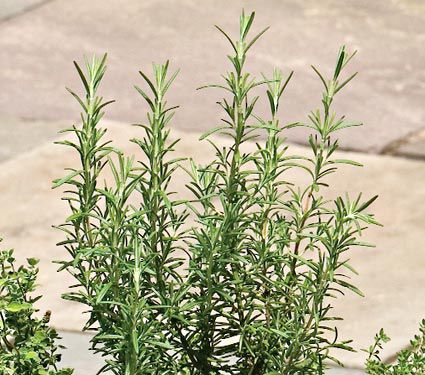
Rosemary Arp has gray-green, lemony scented leaves that are great for cooking. Blue blooms appear in May and June. Rosemary Arp can reach between 3 to 4 feet tall and is deer resistant.
12. Phlox Subulata Scarlet Flame

The Phlox Subulata Scarlet Flame is a stunning creeping Phlox that blooms a bold magenta color. The Scarlet Flame blooms in Spring and has tough durable low growing, green foliage. Deer resistant and a sun loving creeping Phlox.
13. Delphinium Magic Fountains Strain

The Delphinium Magic Fountains Strain is a dwarf Delphinium that blooms in a range of colors including lilac, pink, sky blue, pure white, white with a black bee and dark blue flower. The sun loving Delphinium can reach up to 30 inches tall and blooms in June and September. Best of all the Delphinium is deer resistant!

The Lavender Munstead is a deep heliotrope color that can reach up to 12 inches tall. One of the lowest growing Lavenders is excellent garden selection for a border or garden path. The fragrant Munstead has green-gray foliage with slender flowering stems and is resistant to heat, drought, and deer!

The Anchusa Azurea Dropmore have brilliant blue flowers all summer on 3 to 5 feet spikes. The sun loving Anchusa Azurea leaves are covered with coarse hairs and blooms in June and July.
16. Iris Sibirica Shirley Pope

The Iris Sibirica Shirley Pope has large velvety dark blue flowers. The Shirley Pop Iris like a sunny to partial shade garden area, blooms in June and grows up to 34 inches tall. The Iris was a recipient of the Royal Horticultural Society Award of Garden Merit.
17. Stachys Byzantina Fuzzy Wuzzy

The Stachys Byzantina Fuzzy Wuzzy or sometimes called Lamb’s Ear has silvery white leaves and is great as a garden bed edging plant. The Stachys prefers full sun but will tolerate a part shade garden area. Blooms appear in May through July and can reach up to 18 inches tall.
18. Artemisia Parfum d’Ethiopa
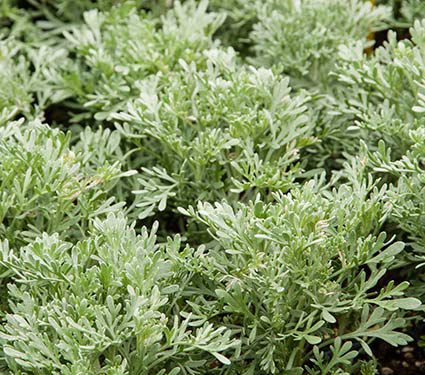
The Artemisia Parfum d’Ethiopa is a silvery upright Artemisia with a sweet fragrance. The Artemisia is grown for its beautiful airy, silvery foliage. The Deer resistant Artemisia grows up to 24 inches tall.
Shade-loving perennials that are deer resistant follow below:
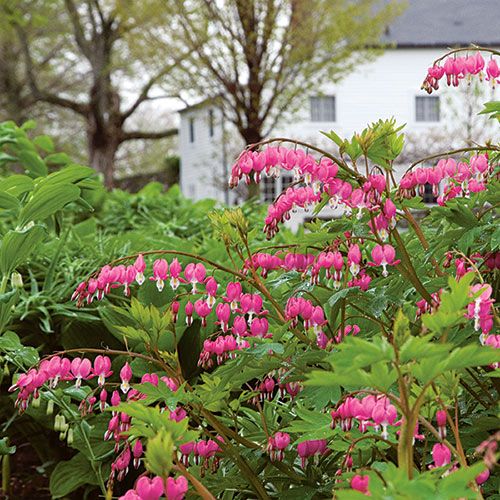
The old-fashioned Bleeding Heart is a garden favorite with racemes or flower clusters of heart-shaped pink flowers. The Bleeding Heart bloom begins in May and lasts until June. The shade loving perennial can reach up to 30 inches tall and best of all is deer resistant.

The Pulmonaria Moonshine has shimmering silver leaves with dark green edges. The plants grow in dense clumps that prevent weeds from growing. The Moonshine Pulmonaria or Lungwort produces dainty, ice-blue flowers in April through May. The shade loving, deer resistant perennial can reach up to 15 inches tall.
21. Asarum Splendens

The Asarum Splendens or Chinese Wild Ginger has beautiful long, narrow heart-shaped leaves marked with bands of silver that lighten the woodland garden. A great foliage shade plant with rich green colors love a little acidic soil with moisture. The Chinese Wild Ginger can form a ground cover that reaches 12 to 15 inches tall. It prefers a part shade to shade garden area.
22. Bergenia Cordifolia Winter Glow

The Bergenia Cordifolia Winter Glow can be used as a groundcover that can resist both deer and rabbits because of its tough, leathery leaves. The Bergenia produces magenta pink flowers in April through May that can reach up to 18 inches tall. The perennial does well in part shade to shade garden area.
23. Helleborus Winter Magic Snow Love

The Helleborus Winter Magic Snow Love is a vigorous shade loving perennial that produces creamy green blooms in March and April. The Hellebore or Lenten Rose has thick, leathery foliage and prefers a part shade to shade garden area. The Lenten Rose reaches 15 inches tall and is Deer Resistant.

The x Heucherella Honey Rose has leaves that are salmon rose in the Spring and turn dark rosy-red in Summer. The Honey Rose or Foamy Bells perennial grows to 8 inches tall and produces creamy white flowers. The x Heucherella grows in a part shade garden.
These are 24 deer resistant plants that do not create an All You Can Eat Garden Buffet for the local deer population. Some of these deer resistant perennials can also be grown from seed to save money. This is especially helpful if you have a large lawn to landscape or live on a homestead. Although there are annuals that are also deer resistant, we decide to select only perennials that will return year after year rather than devote money and time to growing annuals which in may areas of the country last only one year.
Another way to save money is to check with your family or neighbors, maybe they have some deer resistant perennials they are willing to exchange with you. If you try any of these Deer Resistant perennials let us know how you make out.
If you have any questions, feel free to reach out to us in the comments below. We always are ready to help you out.



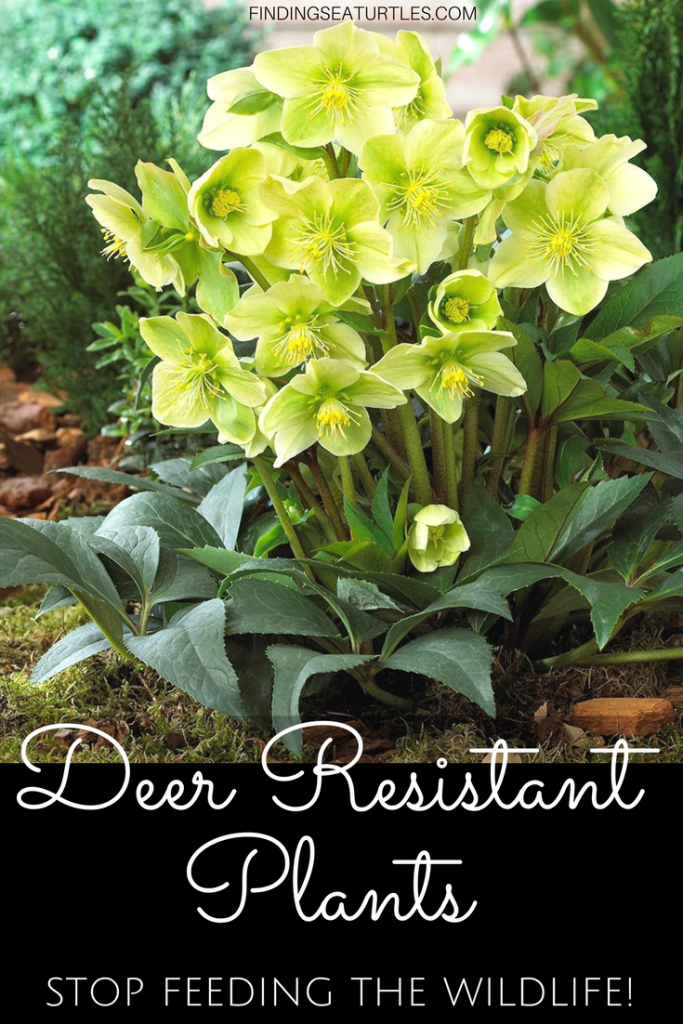









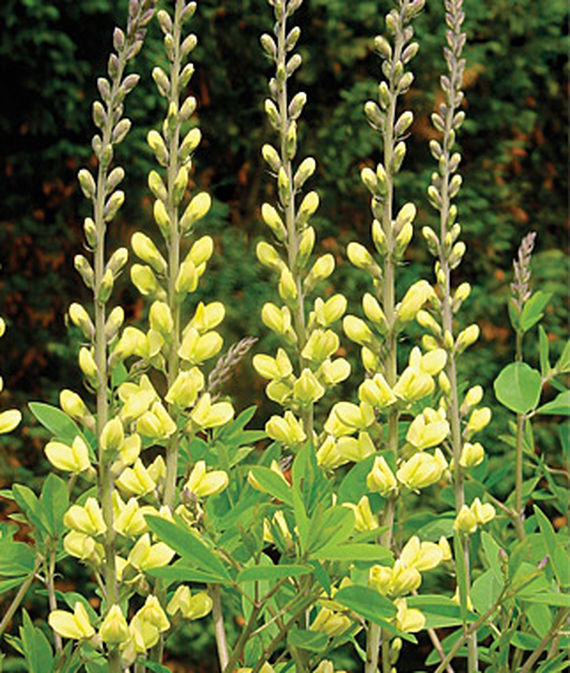
Please don’t plant Asclepias tuberosa!!! This is the WORST milkweed variety you can plant and is actually a cause for the dwindling population of Monarch butterflies! Asclepias tuberosa is also called “Tropical Milkweed” and doesn’t die back in winter like it should, causing Monarchs to not migrate. On top of that it also houses a parasite that infects larvae shortening the life span of adults! Milkweed is the only plant monarchs will lay their eggs on and the primary plant their larvae eats! The milkweed you should be planting are our two main native species, Asclepias syriaca (Common Milkweed), and Asclepias incarnata (Swamp Milkweed). They both have a pink-purple hue. These two die back when they should allowing the monarchs to continue their migration to Mexico. This is incredibly important for crops! When it first came out that monarchs were dying off due to the lack of milkweed everyone rushed out and bought A. tuberosa because it was pretty and stayed in bloom longer. This is actually a cause of further endangerment of the species! Please read the labels and make sure it is a native species such as A. syriaca or A. incarnata and NOT A. tuberosa.
Asclepias tuberosa is fine to plant in gardens. You’ve probably confused it with Asclepias curassavica, tropical milkweed, and there really isn’t a majority consensus that tropical milkweed is harmful to butterflies. Please stop spreading misinformation on the Internet. You’re part of the problem.
To everyone else on the Internet – please feel free to go ahead & plant asclepias tuberosa, aka butterfly weed on your property, so long as you don’t use pesticides in your yard/lawn. And ps – that includes lawn companies “maintaining” your property. Those little orange/yellow flags put down by lawn companies = pesticides & they pour it on with hoses. Not just on lawns, but I’ve seen those guys drenching trees & bushes as well.
Asclepias tuberosa is very valuable to Monarchs.
The troublemaker is Asclepias currviassia
Share
Images
Image result for asclepias curassvica
Image result for asclepia cuvrassavica
More images
Asclepias curassavica – Wikipediahttps://en.wikipedia.org › wiki › Asclepias_curassavica
A
Thank you!! We just moved to a neighborhood with a wonderful deer population. Wonderful …until I began planning our landscaping and discovered how many plants deer actually liked to eat! This list will give us colorful options throughout the year. It’s honestly been the most helpful article I’ve read as planning our landscape. Thank you!!
Thanks so much for your kind words and glad we were able to provide some helpful info! Hopefully you’ll find a few options that the deer will leave alone. Let us know how things work out. Best of luck with the new neighborhood and garden!
Love your information
Thanks for the feedback Nancy! Let us know if there are other topics you’d be interesting in reading more about. Mary@FindingSeaTurtles
The deer in our neighborhood eat Bergenia, heucherias, Roseanne geranium, but I will try some of the others.
Thanks for the feedback Carma – yes, unfortunately these plants are only labeled “deer-resistant” and not deer-proof, as you have found out that deer will nibble on most things when very hungry (or curious). Have you tried some deer repellant? We have had some luck keeping deer at bay with certain products like Bobbex – see this post for more details. Thanks for stopping by and please let us know if you have better luck with other plants on this list. Mary@FindingSeaTurtles
We are moving to our lake house soon & we have very heavy clay soil. Some of our property is in bright sun & other parts are in shade. We have deer
We are zone 3 in Alberta. Will the above plants survive in our area?
Thank you.
Ken
Would really love a list of deer and rabbit resistant perennials for shade and sun.
Hi Barb,
I’m going to respond to this in two parts – the first are a list of perennials for Sun gardens that are resistant to both deer and rabbits. The second part is a list of shade loving perennials that are resistant to both deer and rabbits.
Just a reminder that these plants are considered resistant to deer and rabbits and by no means considered deer and rabbit proof. What these means is that deer and rabbits tend to not eat these plants. However, over the Winter months and early Spring when there is a limited source of food, deer or rabbits may eat these plants. What has worked for me personally, is not only using plants resistant to deer and rabbits but to also spray my plants, shrubs, and trees with Bobbex deer repellant or rabbit repellant. We have a serious deer problem and minor rabbit problem in our yard. Bobbex is a spray repellant product that is designed deter deer or rabbits from eating them. Bobbex can be bought at Home Depot or Amazon.
For Sunny garden areas ….
Ice Ballet Swamp Milkweed, Rose Swamp Milkweed (Asclepias incarnata), Butterfly Weed (Asclepias tuberosa) – Pow Wow White Coneflower, Magnus Purple Coneflower, Purple Coneflower (Echinacea purpurea) – Woolly Thyme, Pink Creeping Thyme, Pink Chintz Creeping Thyme – Praire Sage – Licorice Hummingbird Mint, Texas Hummingbird Mint, Blue Blazes Hummingbird Mint (Hyssop) – Brilliant Oriental Poppy, Prince of Orange Oriental Poppy (Papaver orientale) – Red Rocks Hybrid Beardtongue, Coconino County Desert Beardtongue, Yellow Pineleaf Beardtongue (Penstemon) – Purple Poppy Mallow (Callirhoe) – Amistad Sage (Friendship Sage), Raspberry Delight Salvia (Bush Sage) – Munro’s Globe Mallow (Sphaeralcea munroana) are a few deer resistant plants for Sunny areas.
Mary @wwwfindingseaturtles.com
Hi Barb,
This is the second part of your request. List of perennials for shade that are resistant to deer and rabbits.
For shade gardens –
Little Lanterns Columbine, Golden Spur Columbine, (Aquilegia) – White Nancy Lamium, Pink Pewter Lamium (Spotted Dead Nettle) Purple Dragon Lamium maculatum (Dead Nettle), Herman’s Pride Archangel (Lamiastrum), Orange Carpet Creeping Hummingbird Trumpet (Zauschneria) – Summer’s Swan Song Ironweed (Vernonia)
Astilbe c. Vision in Pink, Astilbe Bridal Veil, Bergenia Dragonfly ‘Angel Kiss’ Common name: Pigsqueak, – Heuchera s. ‘Firefly’, Heuchera v. ‘ Lime Rickey’, Heuchera ‘Northern Exposure Purple’ (Coral Bells) – Raspberry Splash Lungwort, Smokey Blue Lungwort, Majeste Lungwort (Pulmonaria) – Doronicum orientale Little Leo (Leopard’s Bane) + these –> Ajuga (ground cover), Ferns, and Hellebore (Lenten Rose) plants
Hope this helps you.
Thank you for reading FindingSeaTurtles.com.
Mary @FindingSeaTurtles.com
I do have some of the plants that are on the list and the deer do not touch them. I also have plants that they like and I now cut up fencing and make cages around them. I can’t give up the ones I like. I am planning on adding more of the flowers that the deer don’t like and surrounding the the ones they like with the ones they don’t like to see if that works.
Thank you so much for these lists! Very helpful! I live in an area that is highly populated with deer& they love to eat their way around out Iproperty & throughout the neighbourhood, so I shall pass these along to our friends & neighbours!
Hi Suzette,
Thank you for your kind words. We too have a serious deer problem which is especially noticeable in early Spring after the end of Winter when food is scarce. Best of luck to you and your neighbors. Thank you for reading FindingSeaTurtles.com blog.
Mary
Thanks for the information. We have Elk and Deer with Elk being the most troublesome of the two. I’ve been able to grow quite a few perennials in two areas. Either the help of a fence made of heavy duty fishing line and some liquid fence. I have Echinacea, Shasta Daisies, Blanket Flower, Veronica, Iris, Beardstongue, Red Hot Pokers, Blackeyed Susan’s, Asiatic Lilies, Campenula and day lilies.